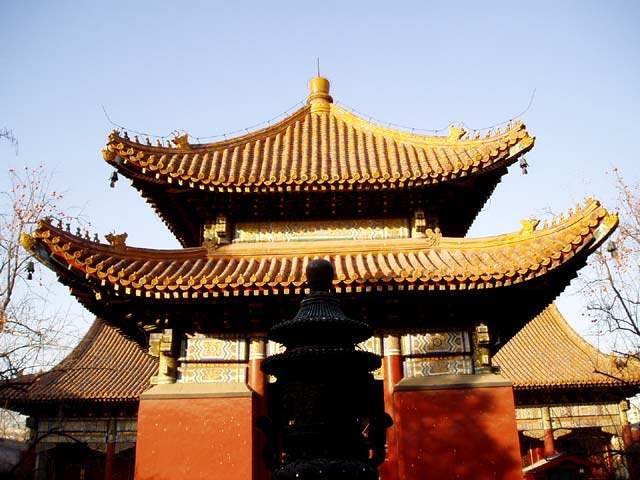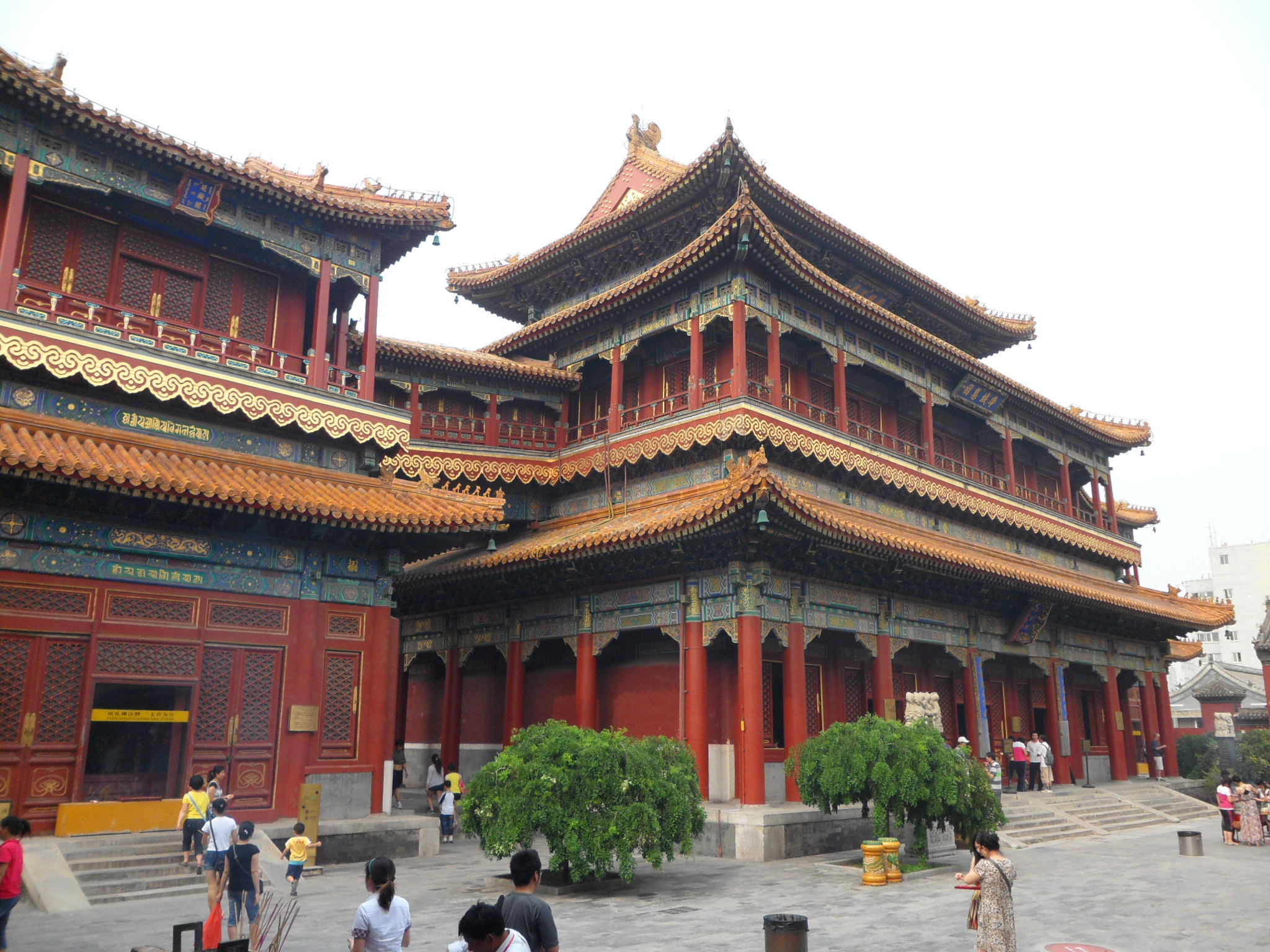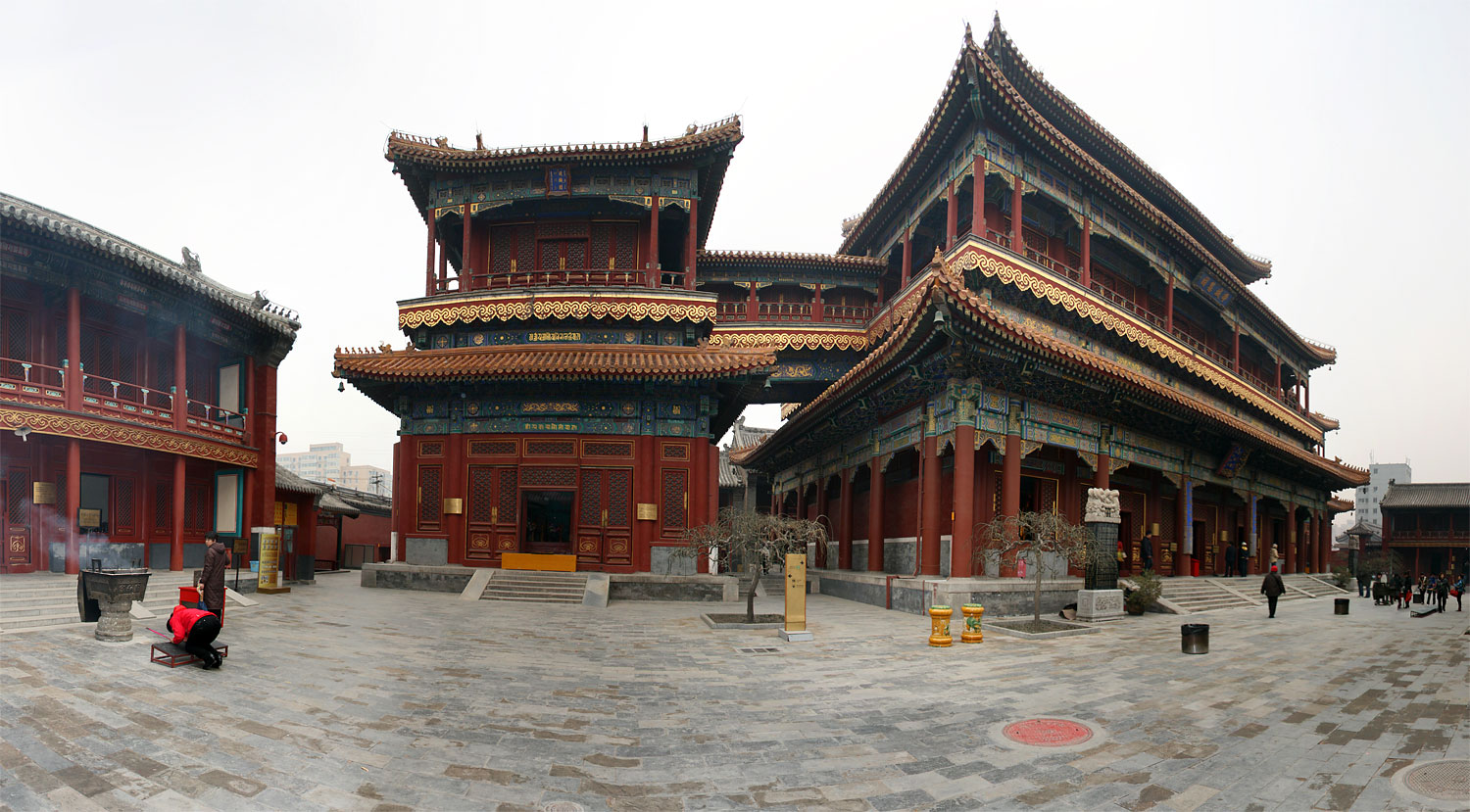



Lama Temple (Yonghe Temple; Yonghe Lamasery) is the largest and best-preserved lamasery in Beijing. It was built in 1694 during the Qing Dynasty (1644-1911) as the residence of the Emperor Yongzheng (the third emperor of the Qing Dynasty) before he ascended the throne. In the year 1744, the residence was completely converted into a lamasery. So this resplendent architectural complex is endowed with the style of an imperial palace, making it distinctive from others. It occupies an area of 66,400 square meters (16 acres) and is described as a mini-palace with yellow glazed tiles on the roof and red walls circling the group of buildings.
As with most everything in China, the Lama temple has to have a nickname and this one is also known as the Palace of Peace and Harmony, not to mention its technical name: the Yonghegong lamasery. But no matter what you call it, the Lama temple remains on of the most important tourist attractions in Beijing. Sure, most visitors flock to the Forbidden City or Great Wall of China, but that doesn't mean the Lama temple doesn't have its own rewards. The history of the Lama temple is palpable throughout its grounds, found in the northeast corner of Beijing. Originally built as a mansion for Emperor Yongzheng of the Qing Dynasty when he was a prince, the temple is now one of the great Beijing attractions, notable for its intricate archways and detailed sculptures. Situated across five large halls, each with a corresponding courtyard, the sculptures are some of the most striking in all of China. Depicting a cavalcade of rounded Buddhas, angry Gods and spiteful demons, there are also plenty of colorful murals constructed in the traditional Tibetan style. In fact, Tibet's and Mongolia's influence is mentioned everywhere in the history of the Lama Temple. During the reign of Qian Long, many monks from these areas were invited to stay in this lamasery, a friendly gesture that, along with the stoppage of construction on the Great Wall of China, helped a great deal in relations with the neighboring empires. The architecture of the temple was forever reconfigured in 1723, when half of the temple was converted into an imperial palace. This transformation resulted in a floor plan that is quite unlike any other temple in all of China. Closed for years following the communist revolution due to strict laws governing religion in China, it wasn't until 1980 that it was finally allowed to be reopened.
| Opening Hours | Admission Fee |
|---|---|
| 9:00 to 16:30 (Apr. 1 to Oct. 31) | Adults: CNY 45 |
| 9:00 to 16:00 (Nov. 1 to Mar. 31) |